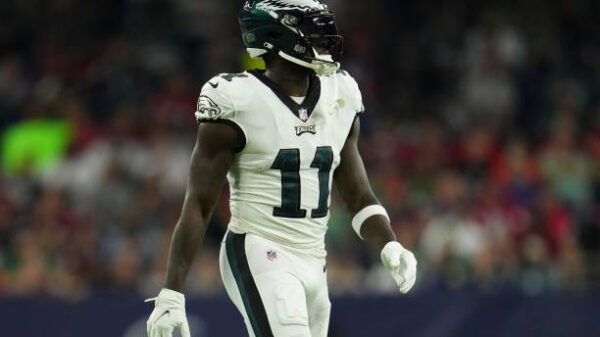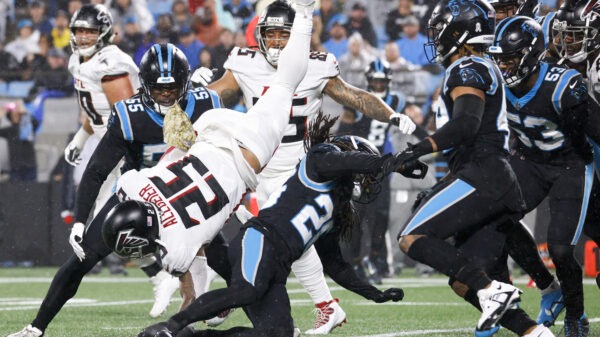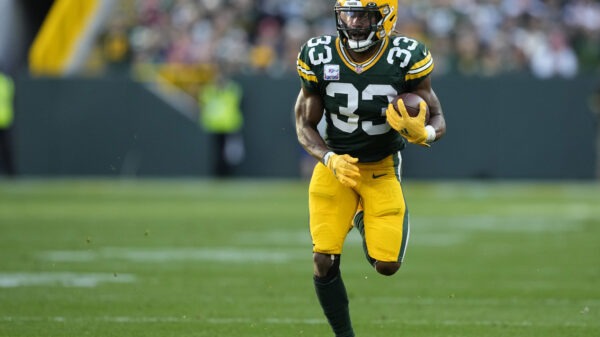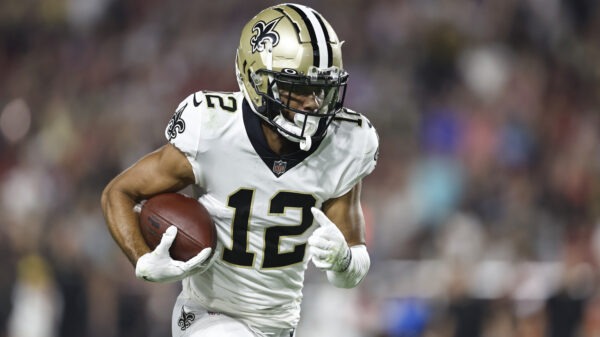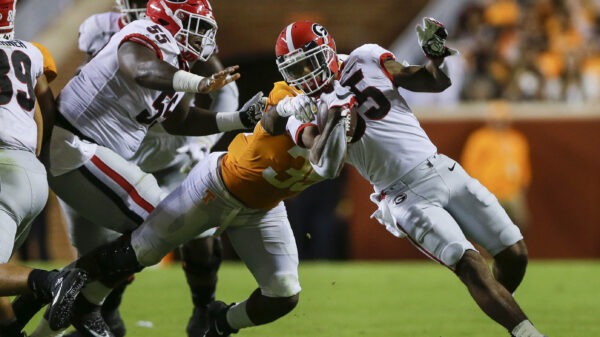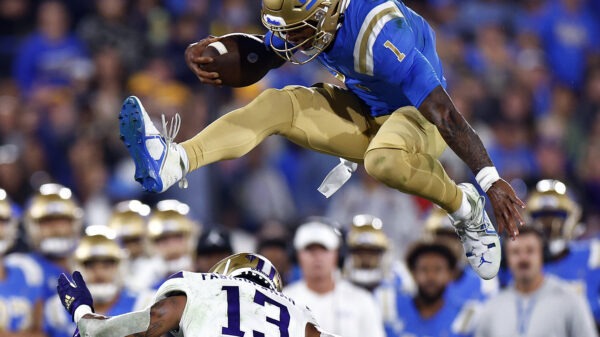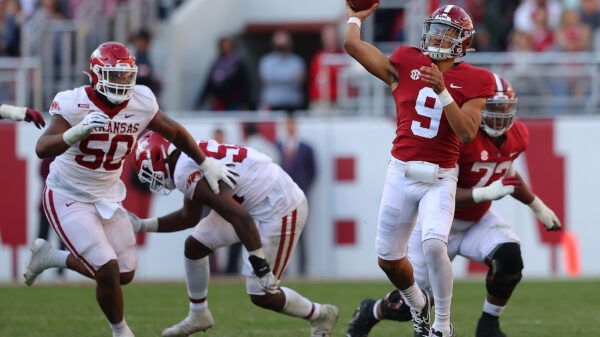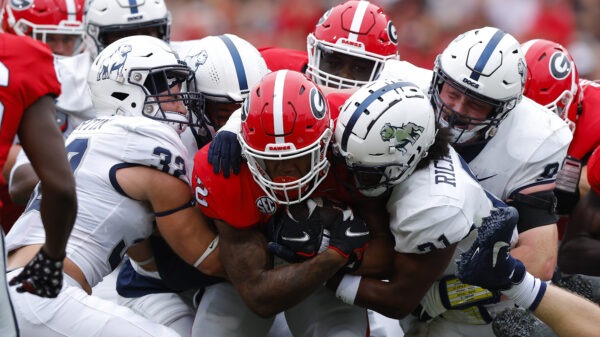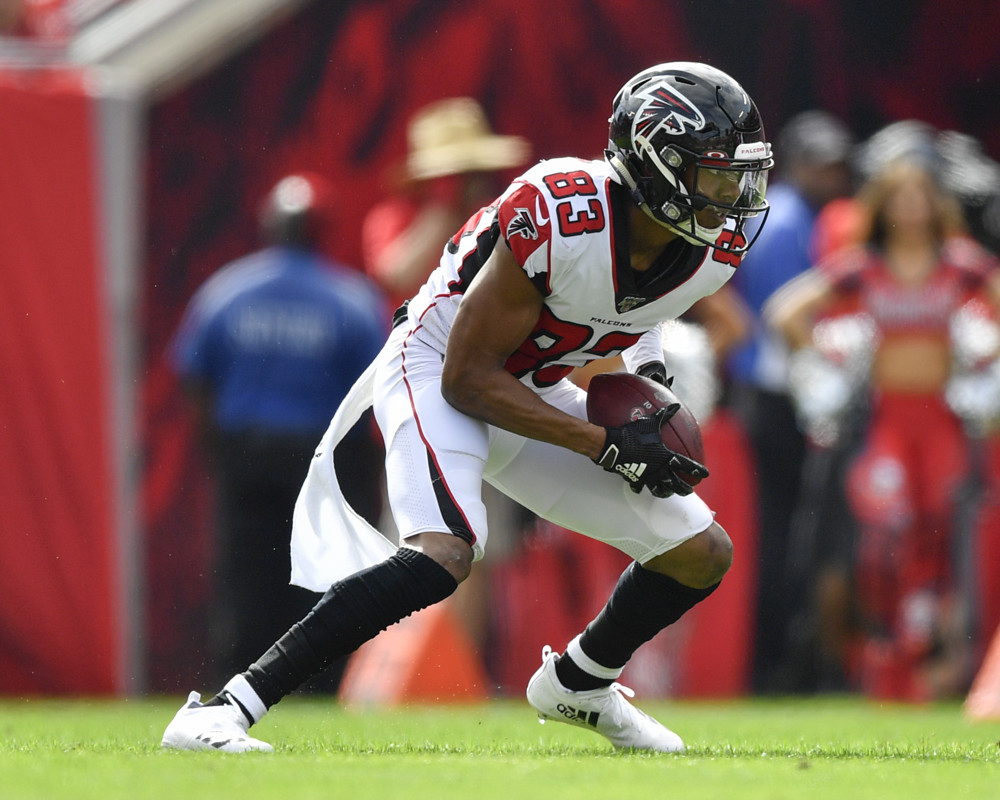Now that I got you all hungry let’s relate this back to DFS. Just as you do in your “real life”, you need to stick to a budget when setting your lineup and there is no choice not to. Turning your DFS entries into a profitable endeavor requires the services of some high-priced studs. That turns into a budget crunch and you are left to fill out your lineup with some lessor priced options. But just because you take a trip further down on the salary list, it doesn’t mean that you need to sacrifice on quality.
One player who fits this thought process is Russell Gage ($4,300 DK, $4,800 FD). Before we dig into Gage and why we have our eye on him this season, lets also take a look at one other piece of strategy. It’s all about maximizing receptions from your wide receivers but they can come from anywhere on the team regardless of role. Just because Gage is number three receiver on the Atlanta Falcons, by no stretch does that mean we should ignore him. In fact, at least to start the season, that is part of his appeal as it is keeping his salary down.
With one of the best and busiest passing offenses in the league, volume isn’t going to be an issue for Gage. With Julio Jones and Calvin Ridley lining up on opposite sides of the formation it actually works to Gage’s advantage as there are limitations with who opposing defenses can cover. And Gage is going to be further down on that priority list.
Following the trade of Mohamed Sanu to the Patriots last season, Gage took solid step forward. From weeks eight through 17 he averaged five receptions per game as he stepped right into Sanu’s role. As we enter 2020 Gage now has had a full off-season to prepare for his new place in Atlanta’s offense with half a season’s worth of experience in it. Overall he caught 49 passes for 446 yards and one touchdown on 74 targets last year but those are numbers that we expect to see increase in 2020.
Over the off-season the Falcons replaced Austin Hooper with Hayden Hurst and that will likely free up a few more targets for Gage as well. The indication and thought process is that Todd Gurleywill also be better than whatever Atlanta’s running game had to offer last season so that too should free up more room for Gage to work across the middle of the field and out of the slot. With an above average catch rate of 66.7% last season we know that a level of comfort has also been established between Gage and Matt Ryan.
If you simply take Gage’s average of five receptions per game and apply to a 16-week season that would give you 80 catches for roughly 800 yards. That doesn’t factor in any potentially efficiencies in the yard per reception department, but that brings you a solid 10 points a week in a PPR league without factoring in the possibility of any touchdowns. While you generally want to resist mathematical exercises like this, in the case of Gage it very easily can be considered his floor. Yes it does sound a little crazy since he is the number three receiver, but the Atlanta offense has proven it can sustain this level of production.
When filling out my roster with a budget friendly option I like to look for both floor and upside. The same applies to the end of my roster in seasonal leagues, and that is what put Gage on my radar. Gage isn’t going to finish the season as Atlanta’s number one receiver and he doesn’t have that type of potential but that is also factored into his price.
As we look at Week One, Gage is someone that has a good possibility to find his way into my lineups. There is clear value in the security of his role as you aren’t just throwing a dart and hoping for a touchdown like other receivers in that price range. Atlanta starts their season off by facing the Seahawks who were a middle of the road team last season against the pass and despite the addition of Jamal Adams, their defense appears to have taken a slight step back. We should certainly expect the Falcons to come out throwing early and often and Gage stands to benefit.


